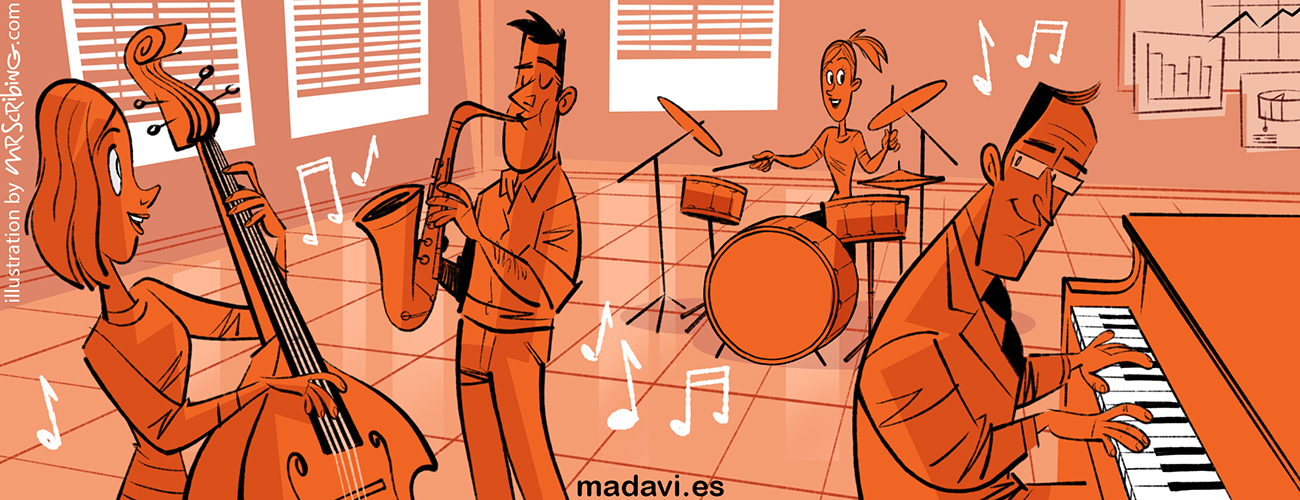Collective Intelligence and Jazz

Collective intelligence is a lot like Jazz. When jazz musicians interpret a piece, this has a base previously agreed upon, but the best begins when one musician departs from what has been previously established and the rest follow in an effective improvisation. That is when concerts gain their maximum intensity and connection with the public, when the musicians are at their most authentic and when they enjoy themselves the most.
In organizations leadership is valued and is given a vital role in all the facets of the organization, but it is the followers that make a leader great. In Jazz like in conversations the most important are the number twos, the followers.
The greatest virtue of a follower is the capacity to listen. To pay attention while the others play, to interpret the intention, the rhythm and the melody which arises without prior warning and use all his skill for the piece which another is leadering so that it becomes a success.
The follower is generous, multiplying and reliving the other’s lead. By offering all his capacity you can count on the capacity of all the others when it is considered appropriate. It is this characteristic of Jazz which makes it such a creative music and makes it impossible to listen live to the same piece twice.
In Jazz if a musician makes a mistake the others build on that mistake creating something beautiful and unexpected. It is a positive attitude towards what may happen. It is about thinking that what is occurring has potential, whatever it may be.
Jazz is a good example of collective intelligence and simultaneous collective action. Jazz has a balance between the chosen theme and the creativity of the present moment, a combination of leadership and freedom.
In a conversation listening is the sovereign, since it is listening that gives sense to speaking and what allows ideas to unite and develop and permits the flow of the conversation.
There are at least three unproductive ways to listen: the full glass, the broken glass and the dirty glass.
A person with the full glass is so full of his own ideas that he has no room for any others. When the other person finishes talking, he answers with his own booklet and instead of listening has simply waited for his turn to speak.
In the broken glass the liquid escapes and is not retained. There is a lack of concentration, a lack of real interest in the opinion of the other person.
In the dirty glass one type of liquid enters and changes into another. When our emotion is unproductive we only listen to that which corroborates our emotion. One thing is said but another is understood.
The follower is the most important person in a conversation. He listens with a clean, empty and unbroken glass. He takes notice when the other person has an idea and he makes an effort to understand it, especially if it does not conform. He also focuses on the abundance and concentrates on discovering what would be the benefits of carrying it out in an excellent manner. Next, he has a dialogue on how to attain those benefits and so reaching an unexpected result for all the participants in the conversation.
The follower, together with the rest of the followers, enters the mode of “Blue Thinking” so as to explore the maximum possibilities of the idea. To think in blue is to talk about “why yes” and “how yes”. It is to think creatively.
I recommend the book “Say Yes to The Mess” by Frank Barret. It is the book in which I have found inspiration in Jazz.



